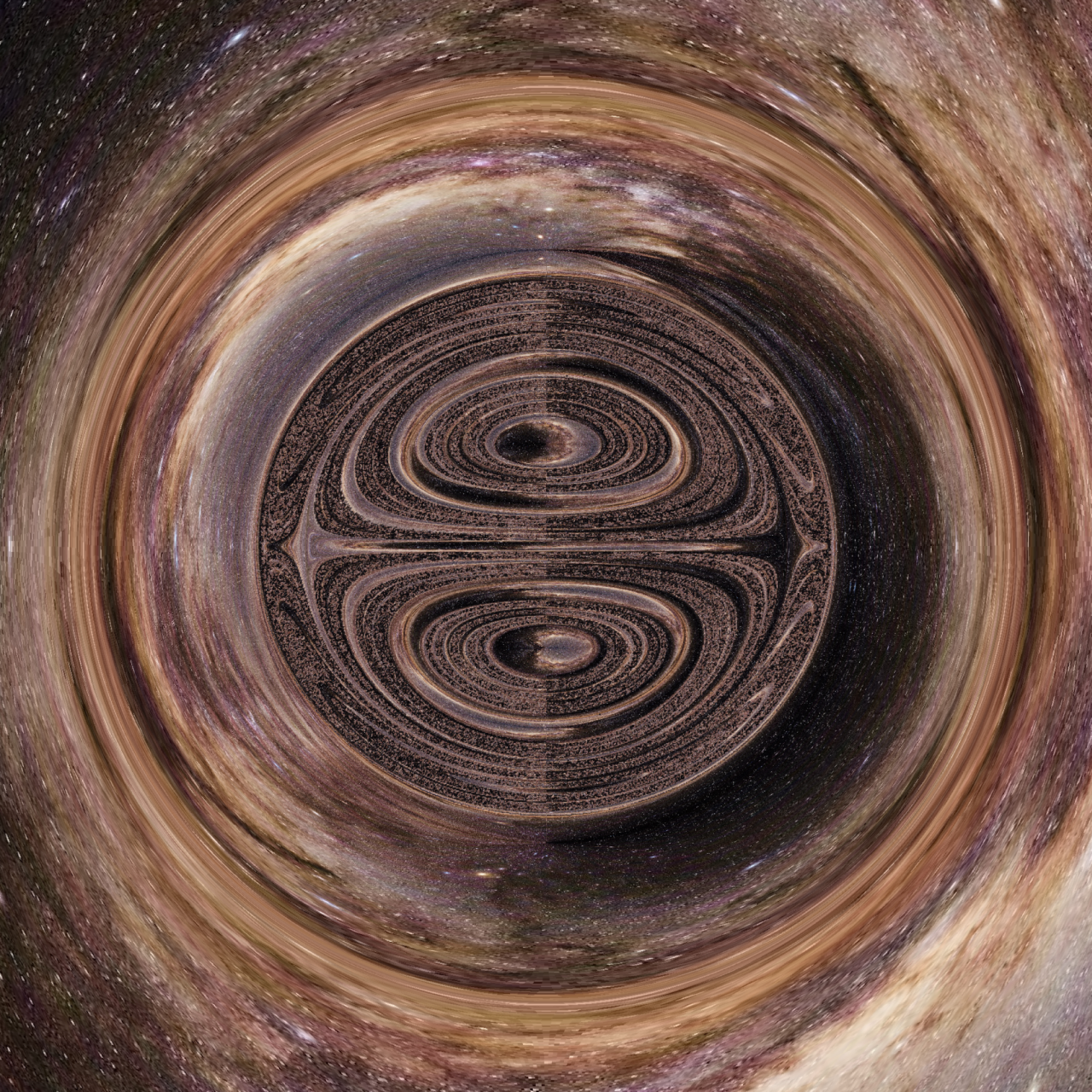Image: Johns Hopkins University
ABSTRACT breaks down mind-bending scientific research, future tech, new discoveries, and major breakthroughs.
Black holes might really be strange defects in spacetime called topological stars that are generated by hidden cosmic dimensions, reports a new study.
Topological stars are completely hypothetical and only exist as mathematical constructions at this point. However, they have the potential to probe perplexing paradoxes of the cosmos, including the true nature of black holes and the mind-boggling ideas raised by string theory, a framework that attempts to reconcile seemingly contradictory physical laws into a unified theory.
Advertisement
String theory proposes that particles in the universe are actually vibrating strings tethered to many extra dimensions that are imperceptible to us. Scientists at Johns Hopkins University (JHU) have worked for years to envision the objects and phenomena that might exist in such a universe, including topological stars, or topological solitons, which are bubbles of nothing that form in the fabric of spacetime.
Now, the team has used simulations to show that topological solitons would appear “remarkably similar to black holes in apparent size and scattering properties, while being smooth and horizonless,” according to a recent study published in Physical Review D. In other words, the hypothetical objects would look almost exactly like black holes from our perspective, raising the tantalizing possibility that they may actually lurk in our universe.
“String theory is a theory that reconciles quantum physics and gravity into a quantum gravity theory,” said Pierre Heidmann, a postdoctoral fellow at JHU who led the study, in a call with Motherboard that also included co-authors and JHU physicists Ibrahima Bah and Emanuele Berti. “Usually when you have a new theory like that, you have new degrees of freedom that come with it, and you can try to see what new fundamental objects can arise from that.”
Advertisement
“It’s an interesting question to ask: Are there things other than a black hole” that “will give you a hint about what new physics could look like?” added Bah. “But before you get there, you need to know how to tell whether you have a black hole or not, and to do that you have some prototype examples of things that are not black holes to be able to compare.”
Black holes are among the most fascinating and puzzling objects ever observed in our universe. These massive compact entities have so much gravitational power that nothing, not even light, can escape beyond their borders, known as the event horizon. Scientists have imaged black holes with the Event Horizon Telescope and have captured the ripples that these objects make in spacetime, which are called gravitational waves.
Though we can detect real signs of black holes in space, there are still many open questions about the nature of these strange objects. For instance, our current conception of black holes places a point of infinite density, known as a singularity, at the center of the hole. However, infinitely dense regions can’t exist according to Albert Einstein’s theory of general relativity, which means that the idea of a singularity is basically a placeholder until we can figure out what is actually happening within black holes.
Advertisement
String theory could help to resolve this problem because it presents a new framework for unifying the universe at large cosmic scales, where general relativity reigns, with the small scale world of atoms, which is governed by quantum mechanics.
Heidmann and Bah have been working for years to explore this possibility by constructing mathematical models of topological stars. In their newest collaboration with Berti, who specializes in gravitational physics, they produced visualizations of what these objects would look like in space, revealing that they appear almost exactly like black holes.
“The big breakthrough that [Heidmann and Bah] made a few years ago is that they finally managed to construct solitons that had no charge as seen from very far away, and that’s a key property of astrophysical black holes,” Berti said. “Many people in the standard general relativity community started paying attention after that because these things may have observational implications if there’s some way that they can actually be realized in the physical universe.”
While solitons bear a striking resemblance to black holes, key differences could theoretically be spotted by an observer who got close to them. The objects are like wrinkles in spacetime, with none of the compact matter that is typical of black holes, which means that light would be bent and scattered by them, but could still escape.
As a result, topological stars would theoretically emit light signatures, and gravitational waves, that would be “smoking guns for future imaging experiments,” according to the study. Perhaps one day, scientists might look for these signatures to see if topological stars are hidden in the cosmos, disguised as black holes, but the JHU team said this possibility is very far in the future because it’s not remotely clear if they could even exist.
“We have just basic solutions and we try to see their relevance, but we’re very far from any kind of prediction of their existence in the world,” Heidmann said.
“There’ll be a lot of exciting things for several of us to be doing and it’s an interesting set of questions to explore” that will “require a lot of hard work and a lot of creativity,” concluded Bah. “But does this rabbit hole make sense to go down into? I think that question is very well settled.”
 RSS Feed
RSS Feed













 May 24th, 2023
May 24th, 2023  Awake Goy
Awake Goy 

 Posted in
Posted in  Tags:
Tags: 
















